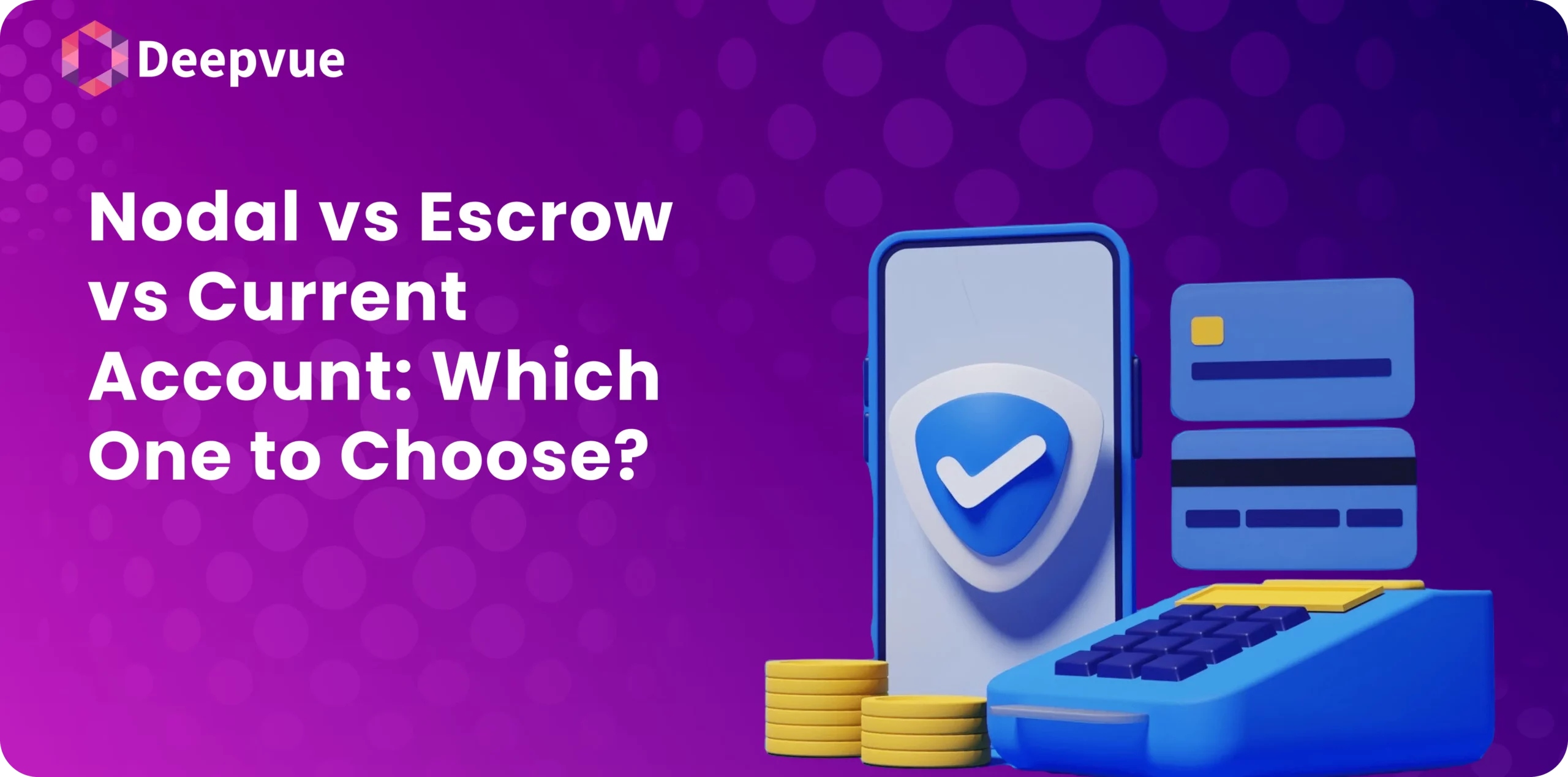When it comes to validating bank account details, businesses need a reliable and efficient method to ensure that the account information provided by their customers is accurate. This is where penny drop verification comes into play.
This process involves depositing a small amount, typically Rs 1, into the customer’s bank account to confirm its validity. Here’s everything you need to know about penny drop verification.
What is Penny Drop Verification?
Penny drop verification is a method used by businesses to validate a customer’s bank account by depositing a nominal amount, usually one rupee or its equivalent. This small transaction helps confirm that the account is active and belongs to the specific recipient.
How Does Penny Drop Verification Work?
The penny drop verification process is straightforward and involves the following steps:
- Customer Provides Bank Details: The customer shares their bank account number and the IFSC code with the service provider.
- Initiation of Penny Drop: The service provider initiates a small deposit, typically Re 1, into the customer’s bank account using a penny drop API.
- Verification of Account: If the deposit is successful, the bank account is deemed valid. The transaction will confirm the account holder’s name, ensuring it matches the provided information.
- Result Confirmation: The service provider receives confirmation of the transaction, including the account holder’s name and the account status.

Why Do Businesses Need Penny Drop Verification?
Businesses use penny drop verification for several key reasons:
- Validating bank Account: To confirm that the bank account exists and is operational.
- Verifying account holder: To ensure that the bank account belongs to the intended recipient, matching the account holder’s name.
- Preventing Fraud: To mitigate the risk of fraudulent transactions and identity theft.
- Reducing Errors: To avoid errors in payment transfers, ensuring that funds are sent to the correct accounts.
Benefits of Penny Drop Verification
- Accuracy: Provides precise validation of bank account details.
- Speed: Allows for instant verification, saving time compared to manual methods.
- Security: Enhances the security of financial transactions by confirming account ownership.
- Compliance: Helps businesses comply with regulatory requirements for financial transactions.
Applications of Penny Drop Verification
Penny drop verification is widely used in various financial transactions, including:
- Vendor Payments: Ensuring the validity of vendor bank accounts before making payments.
- Employee Salaries: Verifying employee bank accounts for accurate salary disbursements.
- Insurance Payouts: Confirming bank account details for insurance claim settlements.
- Pension Transfers: Validating pension beneficiaries’ bank accounts for smooth transfers.
- Loan Disbursements: Ensuring borrower bank account details are correct before loan disbursement.
Integration of Penny Drop APIs
Penny drop verification can be seamlessly integrated into business processes through APIs. These APIs enable businesses to automate the verification process, making it efficient and hassle-free.
- Easy Integration: APIs can be integrated into existing systems without requiring extensive changes.
- Automated Process: Reduces the need for manual intervention, streamlining the verification process.
- Real-Time Verification: Provides instant results, enhancing the efficiency of financial operations.
Penny Drop Verification and Compliance
Ensuring compliance with financial regulations is crucial for businesses. Penny drop verification helps meet regulatory requirements by:
- Validating Account Ownership: Confirms that the bank account details match the customer’s identity.
- Preventing Fraud: Reduces the risk of fraudulent transactions by verifying the authenticity of bank accounts.
- Ensuring Accuracy: Minimizes errors in financial transactions, supporting compliance with legal standards.
How Penny Drop Verification Prevents Fraud in Financial Transactions?
- A small amount (usually ₹1 or $0.01) is deposited into the beneficiary’s bank account to verify its authenticity.
- Ensures the account number and name match with bank records, preventing errors and fraudulent transactions.
- Stops fraudsters from using non-existent or unauthorized accounts for fund transfers.
- Helps businesses comply with Know Your Customer (KYC) regulations by verifying the recipient’s identity.
- Ensures funds are sent to the correct account, reducing transaction errors.
- Identifies irregular account behavior, such as frequent changes in payee details, helping prevent fraud.
Detailed Steps in Penny Drop Verification Process
To give a more comprehensive understanding, here is a detailed breakdown of each step involved in penny drop verification:
- Collection of Bank Details: The business collects the customer’s bank account number and IFSC code either through a form or during the customer onboarding process.
- API Call to Penny Drop Service: Using the penny drop verification API, the business sends a request to deposit a small amount into the customer’s bank account.
- Execution of Transaction: The penny drop service provider’s system processes the request and deposits the small amount (e.g. Re 1) into the customer’s bank account.
- Verification of Transaction: The bank processes this transaction and sends back a confirmation, including details such as the account holder’s name and the transaction status.
- Validation of Account Holder: The service provider compares the account holder’s name returned by the bank with the name provided by the customer. If the names match, the account is confirmed as valid.
- Handling Failed Verifications: If the bank account is closed or invalid, the transaction fails, and the service provider informs the business of the failure and the reason behind it.
Usage Scenarios of Penny Drop Verification
Penny drop verification can be used in various scenarios to enhance the security and accuracy of financial transactions. Some common scenarios include:
- Onboarding New Customers: Before onboarding new customers, businesses can verify their bank account details to ensure authenticity.
- Processing Refunds: Before processing refunds, businesses can verify the customer’s bank account to avoid errors.
- High-Value Transactions: For high-value transactions, additional verification through penny drop ensures the account details are accurate and reduces the risk of fraud.
- Subscription Services: Subscription-based services can use penny drop verification to validate customer bank accounts before setting up recurring payments.
How to Get Started with Penny Drop Verification
If you are a business looking to implement penny drop verification, here are some steps to get started:
- Choose a Reliable Service Provider: Select a service provider that offers a robust penny drop verification API.
- Integrate the API: Work with your IT team to integrate the penny drop verification API into your existing systems.
- Test the Process: Before going live, conduct thorough testing to ensure the API works seamlessly with your systems.
- Train Your Team: Ensure your team understands how to use the penny drop verification process effectively.
- Monitor and Improve: Continuously monitor the verification process and make improvements as needed to enhance efficiency and accuracy.
Conclusion
Penny drop verification is an essential tool for businesses to ensure the accuracy and validity of bank account details. By depositing a small amount into the customer’s account, businesses can confirm that the account is active and belongs to the intended recipient. This process not only enhances the security and efficiency of financial transactions but also helps in preventing fraud and complying with regulatory requirements.
For businesses looking to streamline their financial operations, integrating penny drop verification through APIs offers a reliable and automated solution. With its wide range of applications, penny drop verification is a valuable asset in the realm of financial integrations and insights.
Deepvue provides cutting-edge API infrastructure for financial integrations and insights, helping businesses automate and enhance their financial processes. Our bank account verification API ensures accurate and secure bank account validation, supporting your business’s financial operations with efficiency and reliability.
FAQs
Is penny drop verification secure?
Yes, penny drop verification is a secure method of validating bank accounts. It involves a small deposit that does not pose any financial risk to the account holder.
How long does penny drop verification take?
Penny drop verification is usually instant. Once the deposit is made, the verification results are available immediately.
Can penny drop verification be used for international bank accounts?
Yes, penny drop verification can be used for international bank accounts, but the process may vary depending on the country and currency.
Is penny drop verification mandatory for all financial transactions?
Penny drop verification is not mandatory for all transactions, but it is recommended for verifying bank account details to prevent errors and fraud.
Can penny drop verification be done manually?
Yes, penny drop verification can be done manually by depositing a small amount into the customer’s bank account and verifying the transaction details.








